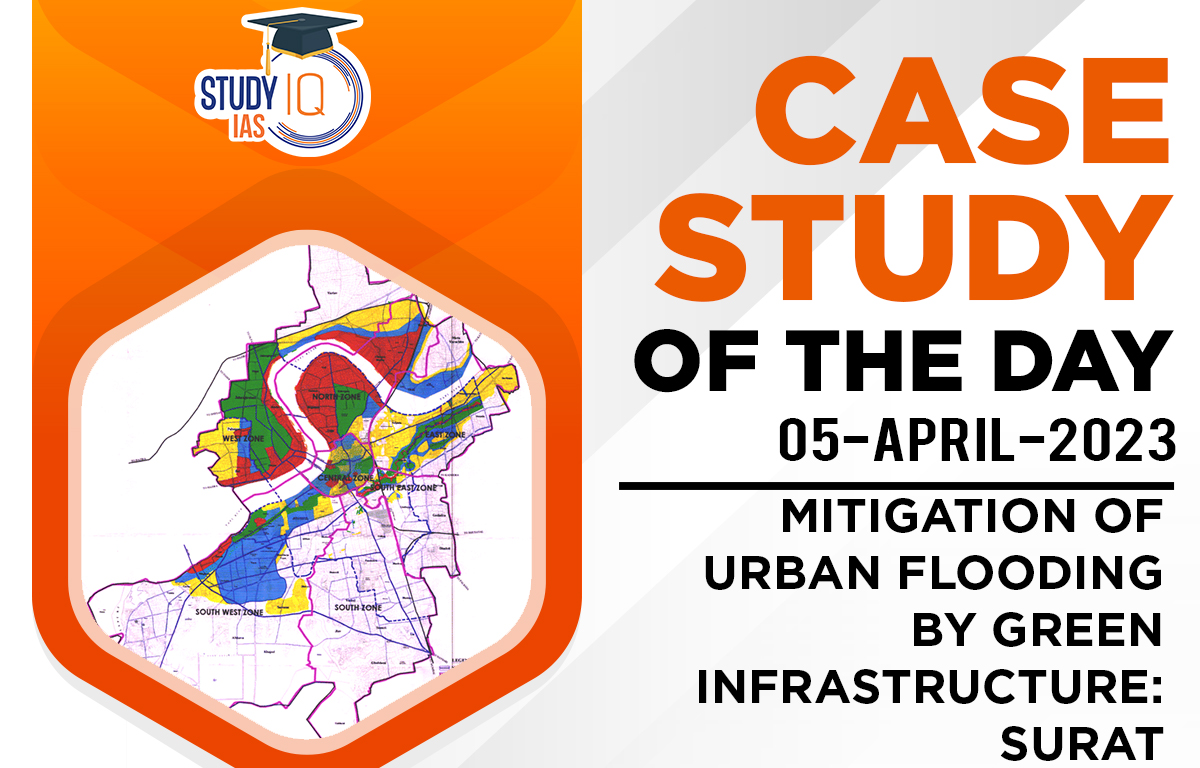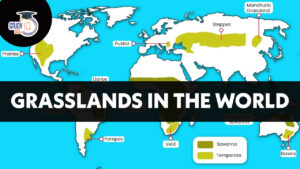Table of Contents
Context: To tackle floods, Surat City has adopted mitigation measures in form of ‘Green Infrastructure’, making it an effective ‘Flood Mitigation’ technique.
About Green Infrastructure for Flood Mitigation in Surat
- Causes of flooding in Surat
- Accelerating impact of demographic growth, urbanization trends and climate changes.
- Tides from Arabian Sea and Higher stream flow in Tapi River from Ukai Dam, increase risk of Floods.
- Encroachment in the floodplain areas and silting in the river-bed have exacerbated the conditions.
- Deficient urban drainage system, deforestation, and impervious surfaces due to urbanization have all added to Flood Risk.
- Under such an increased Risk of Flood, Green Infrastructure could be a feasible solution to aid mitigation efforts.
- At the scale of a city or county, green infrastructure refers to the patchwork of natural areas that provides habitat, flood protection, cleaner air, and cleaner water.
- At the scale of a neighborhood or site, green infrastructure refers to storm-water management systems that mimic nature by soaking up and storing water, such as rain gardens, permeable pavement, and green roofs.
- Green infrastructure uses vegetation, soils, and natural processes to manage water and create healthier urban environments.
- Aspects of Green Infrastructure which can be implemented in Surat
- Storm water Management
- Storm water management means to manage surface run-off.
- It is essential in urban areas where run-off cannot infiltrate because the surfaces are impermeable.
- Storm water harvesting along both the sides of roads with the help of suitable, simple structures, would control storm water hazards.
- Bios wales
- It is a linear vegetative channel which help slow down the run-off and percolate into the ground.
- Dense vegetation helps to infiltrate run-off effectively, hence native plants are preferable.
- Green Roof
- Is a thin vegetative cover over a roof to collect, filter and store rainfall, so as to retain and delay the rain water to end up getting discharged in storm water drains.
- This prevents water-logging and eventually leads to flooding.
- Permeable Paving
- These allow water to percolate or travel through their structure into the underlying ground layer, thereby relieving pressures on traditional storm water management systems.
- Permeable pavements are typically designed to handle as much as 70-80% of annual rainfall.
- Storm water Management
Conclusion
- With increasing pressures of Urbanisation and climate change risk, feasible solutions need to be sought to prevent impact of natural disasters.
- Green Infrastructure as a solution has been proven effective in cities of Rotterdam, London. Hence, the need to mimic the same in India, wherever cities are vulnerable.


 Vitamin D Deficiency: Causes, Symptoms a...
Vitamin D Deficiency: Causes, Symptoms a...
 What will be the Effect of Increased Mil...
What will be the Effect of Increased Mil...
 Grasslands in the World, Map, Types and ...
Grasslands in the World, Map, Types and ...





















